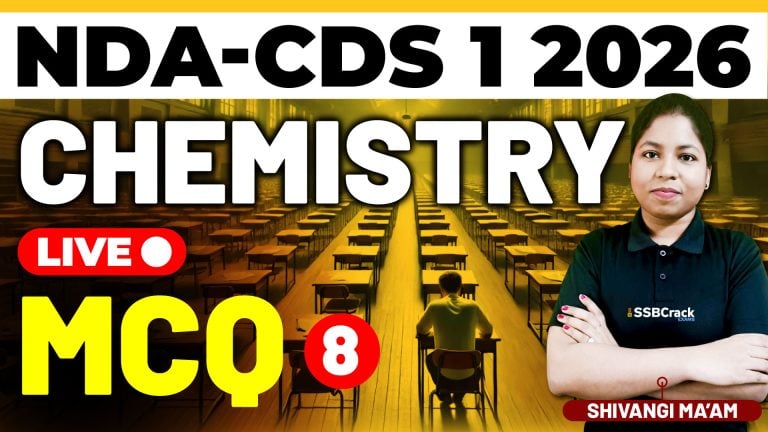Electricity is a crucial topic in physics, especially for those preparing for competitive exams like the NDA (National Defence Academy) and CDS (Combined Defence Services). Understanding the fundamental principles of electricity and mastering the related concepts can significantly enhance your performance in these exams. In this article, we will explore the main sub-topics within electricity and provide strategies for effectively solving related MCQs.
Charges and Static Electricity
Charges are the basic property of matter responsible for electric phenomena. There are two types of charges: positive and negative. Like charges repel each other, while unlike charges attract. Static electricity refers to the accumulation of electric charge on the surface of objects, which occurs when two materials are rubbed together.
- The unit of charge is the Coulomb (C).
- Static electricity is commonly observed in daily life, such as when you rub a balloon on your hair.
Coulomb’s Law of Electrostatics
Coulomb’s Law quantifies the force between two charges. It states that the electrostatic force between two point charges is directly proportional to the product of their magnitudes and inversely proportional to the square of the distance between them.
- The electrostatic force acts along the line joining the two charges.
- The law is similar in form to Newton’s Law of Gravitation but applies to electric charges.
Electric Field
An electric field is a region around a charged object where the object exerts a force on other charges. The strength and direction of the electric field are represented by electric field lines, which point away from positive charges and toward negative charges.
- The electric field is measured in volts per meter (V/m).
- It can be visualized using field lines.
Electric Potential and Potential Difference
Electric potential at a point is the amount of electric potential energy per unit charge at that point. The potential difference (voltage) between two points is the work done to move a unit charge from one point to another.
- The unit of electric potential and potential difference is the Volt (V).
- Potential difference drives the flow of electric current in a circuit.
Electric Current
Electric current is the flow of electric charge through a conductor. It is measured in amperes (A) and is the rate at which charge flows through a point in the circuit.
- Current flows from a higher potential to a lower potential.
- The direction of conventional current is opposite to the flow of electrons.
Ohm’s Law
Ohm’s Law states that the current flowing through a conductor is directly proportional to the voltage across it and inversely proportional to its resistance.
- The relationship is given by the equation V = IR, where V is voltage, I is current, and R is resistance.
- This law is fundamental in analyzing electric circuits.
Resistance and Resistivity
Resistance is the opposition offered by a material to the flow of electric current. Resistivity is a material-specific property that indicates how strongly a material opposes the flow of electric current.
- Resistance depends on the material, length, and cross-sectional area of the conductor.
- Resistivity is measured in ohm-meters (Ω·m).
Combination of Resistors
Resistors can be combined in series and parallel arrangements to achieve desired resistance values in a circuit.
- In series, the total resistance is the sum of individual resistances.
- In parallel, the reciprocal of the total resistance is the sum of the reciprocals of individual resistances.
Internal Resistance, Series, and Parallel Combination of Cells
Internal resistance is the resistance within a battery or cell that causes a drop in the voltage as current flows through it. Cells can be combined in series to increase voltage and in parallel to increase current capacity.
- Series combination increases the total voltage.
- Parallel combination increases the total current capacity.
Kirchhoff’s Laws
Kirchhoff’s Laws include two rules for analyzing complex circuits:
- Kirchhoff’s Current Law (KCL): The total current entering a junction equals the total current leaving the junction.
- Kirchhoff’s Voltage Law (KVL): The sum of the electromotive forces (emfs) and the product of currents and resistances in any closed loop of a circuit is zero.
- These laws help in solving circuits with multiple loops and junctions.
- They are essential for circuit analysis.
Electric Energy, Power, and Heating Effects
Electric energy is the work done by an electric current. Power is the rate at which electric energy is consumed or produced. The heating effect of current, also known as Joule heating, is the heat produced when an electric current flows through a conductor.
- Power is measured in watts (W) and energy in joules (J).
- Heating effect is used in devices like electric heaters and toasters.
Strategies for Solving MCQs on Electricity
Understand Basic Concepts:
- Ensure you have a strong grasp of fundamental concepts and definitions.
- Review key terms and their units of measurement.
Practice Diagram Interpretation:
- Be comfortable with interpreting circuit diagrams and identifying components.
- Practice tracing the flow of current and applying Ohm’s Law.
Utilize Elimination Techniques:
- Eliminate obviously incorrect options to narrow down the choices.
- Use logical reasoning and dimensional analysis to identify the correct answers.
Memorize Key Laws and Principles:
- Commit essential laws, such as Ohm’s Law and Kirchhoff’s Laws, to memory.
- Understand the conditions under which these laws apply.
Conclusion
Mastering the topic of electricity is essential for success in the NDA and CDS exams. By understanding the core principles, practicing problem-solving, and employing effective exam strategies, you can enhance your preparation and improve your performance. Remember, consistent practice and a clear grasp of fundamental concepts are the keys to excelling in these competitive exams. Good luck!



















